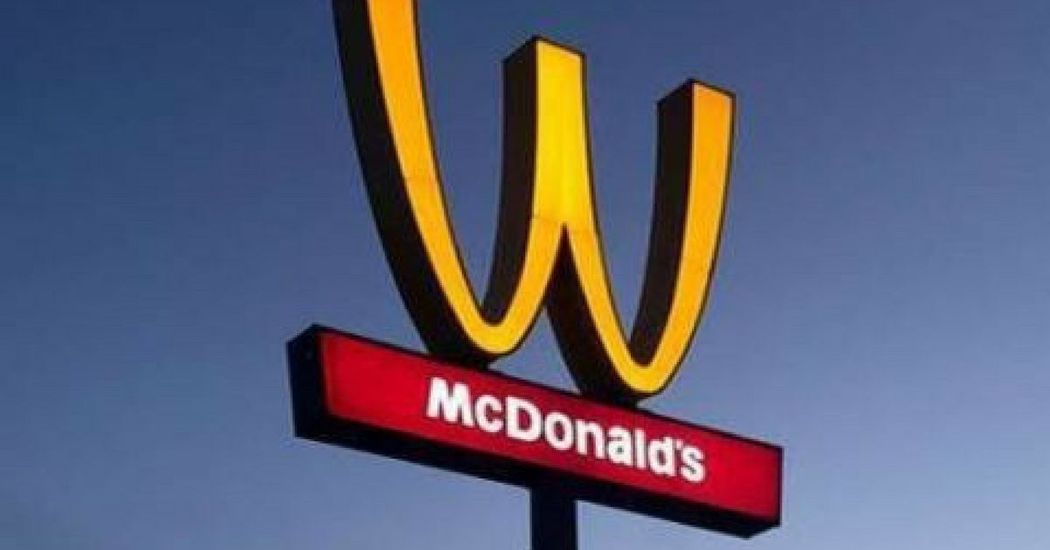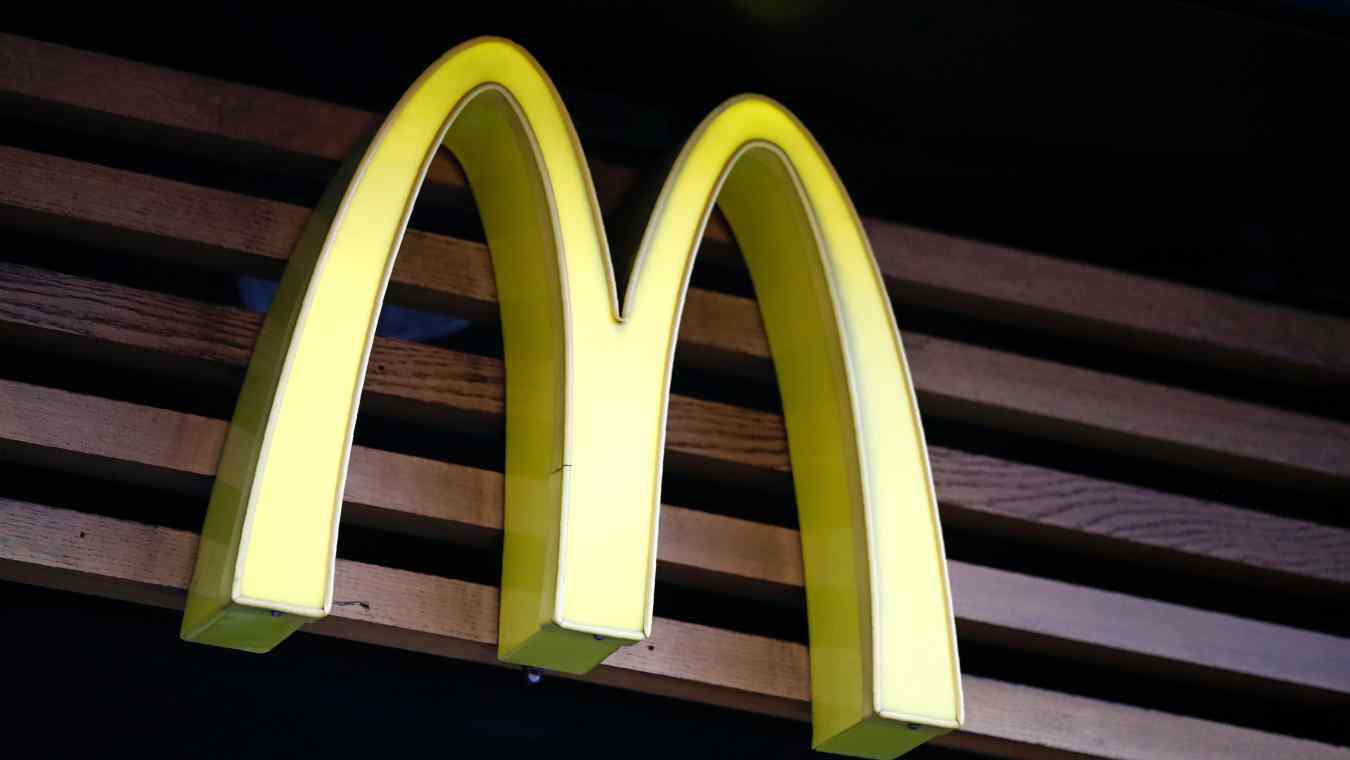Have you ever wondered why the M on McDonald's sometimes appears upside down? This phenomenon has sparked curiosity among millions of people worldwide. The McDonald's logo, one of the most recognizable symbols in the world, carries a deep history and significance that goes beyond its simple design. In this article, we will explore the reasons behind the upside-down M and uncover the fascinating story behind this global brand.
The McDonald's logo, often referred to as the "Golden Arches," is not just a random design choice. It represents much more than a fast-food chain. Understanding why the M appears upside down in certain contexts can provide valuable insights into the company's branding strategy and the psychology behind logo design.
From its origins in the 1950s to its modern-day presence, the McDonald's logo has evolved significantly. However, the upside-down M phenomenon remains a topic of interest for both casual observers and branding experts alike. Let's dive deeper into this intriguing question and discover the truth behind this iconic symbol.
Read also:Avril Lavignes Husband The Ultimate Guide To Her Love Life And Relationships
Table of Contents
- The History of McDonald's Logo
- The Design Philosophy Behind the Golden Arches
- Why Does the M Appear Upside Down?
- The Psychology of Upside-Down Logos
- Marketing Implications of the Upside-Down M
- Variations of the McDonald's Logo
- Global Perspectives on the Upside-Down M
- Statistics and Data on McDonald's Branding
- Comparison with Competitors' Logos
- Conclusion: The Power of the McDonald's Logo
The History of McDonald's Logo
The McDonald's logo has a rich history that dates back to the early days of the fast-food industry. When Richard and Maurice McDonald opened their first restaurant in San Bernardino, California, in 1940, they used a simple red and white design featuring a chef character named "Speedee." However, it wasn't until 1953 that the iconic Golden Arches were introduced.
The original design of the Golden Arches was inspired by the architectural design of the McDonald's restaurants themselves. The arches were part of the building's structure, serving as supports for the roof. Over time, these arches became a symbol of the brand, eventually evolving into the stylized "M" we know today.
In 1962, the company introduced the modern version of the Golden Arches logo, designed by Jim Schindler. This logo has remained largely unchanged for decades, becoming one of the most recognizable symbols in the world.
The Design Philosophy Behind the Golden Arches
The design of the McDonald's logo is rooted in simplicity and effectiveness. The Golden Arches are meant to evoke feelings of warmth, comfort, and familiarity. The color yellow, associated with happiness and positivity, plays a crucial role in this emotional connection.
Key Elements of the Design
- Color Psychology: Yellow is a vibrant and attention-grabbing color that stimulates appetite and creates a sense of joy.
- Shape Symbolism: The arches resemble a smile, which is universally associated with happiness and friendliness.
- Typography: The clean and modern sans-serif font used in the logo enhances readability and reinforces the brand's modern image.
Why Does the M Appear Upside Down?
The upside-down M phenomenon occurs due to various factors, including perspective, design choices, and environmental factors. In certain contexts, such as reflections in water or mirrored surfaces, the logo may appear flipped. Additionally, the company has intentionally used upside-down variations of the logo in marketing campaigns to create buzz and intrigue.
One of the most notable examples of this occurred in 2003 when McDonald's launched the "I'm Lovin' It" campaign. The tagline was written in a stylized font that resembled an upside-down M, reinforcing the idea of flipping the logo for creative purposes.
Read also:Tish Cyrus And Miley Cyrus A Journey Through Their Inspiring Lives
The Psychology of Upside-Down Logos
Using an upside-down logo can have a powerful psychological impact on consumers. This technique challenges the brain to process information differently, creating a sense of curiosity and engagement. Studies have shown that people are more likely to remember logos that deviate from the norm, as they stand out in a crowded marketplace.
Additionally, flipping a logo can evoke a sense of playfulness and innovation. Brands that embrace this approach often appear more approachable and relatable to their target audience.
Marketing Implications of the Upside-Down M
The upside-down M has been used strategically in various marketing campaigns to capture attention and drive engagement. By leveraging this unique aspect of their logo, McDonald's has successfully differentiated itself from competitors and reinforced its position as a global leader in the fast-food industry.
Examples of Upside-Down M Campaigns
- I'm Lovin' It: The 2003 campaign featured an upside-down M in the tagline, creating a memorable and playful experience for consumers.
- Mirror Imaging: In some advertisements, McDonald's has used mirrored images of their logo to create visually striking compositions.
- Interactive Media: Digital campaigns have allowed users to interact with the upside-down M, encouraging participation and sharing on social media platforms.
Variations of the McDonald's Logo
Over the years, McDonald's has introduced several variations of its logo to suit different marketing needs and cultural contexts. These variations include:
Regional Adaptations
- McDonald's Japan: The logo incorporates elements of Japanese culture, such as cherry blossoms, to appeal to local customers.
- McDonald's India: A vegetarian-focused version of the logo emphasizes the brand's commitment to catering to diverse dietary preferences.
These adaptations demonstrate McDonald's ability to maintain global consistency while respecting local traditions and preferences.
Global Perspectives on the Upside-Down M
The upside-down M phenomenon has resonated with audiences worldwide, sparking discussions and debates about its meaning and significance. In some cultures, flipping a logo can carry negative connotations, while in others, it is seen as a creative and innovative approach.
McDonald's has navigated these cultural differences carefully, ensuring that their branding remains respectful and relevant in every market they serve.
Statistics and Data on McDonald's Branding
The success of McDonald's branding is backed by impressive statistics and data. Here are some key figures:
- McDonald's serves approximately 70 million customers daily across more than 100 countries.
- The McDonald's logo is recognized by over 90% of the global population, making it one of the most famous symbols in the world.
- Marketing campaigns featuring the upside-down M have generated significant media coverage and social media engagement, with millions of interactions on platforms like Facebook, Instagram, and Twitter.
These statistics underscore the power of effective branding and the importance of creative logo design in building a strong brand identity.
Comparison with Competitors' Logos
While McDonald's has mastered the art of logo design, other fast-food chains have also developed iconic symbols that resonate with consumers. For example:
- Burger King: The flame-shaped logo emphasizes the brand's focus on flame-grilled burgers.
- KFC: The Colonel Sanders portrait creates a personal connection with customers.
However, McDonald's stands out due to its universal appeal and adaptability, making it a benchmark for other brands in the industry.
Conclusion: The Power of the McDonald's Logo
In conclusion, the upside-down M phenomenon is a testament to McDonald's innovative approach to branding and logo design. By embracing creativity and adaptability, the company has built one of the most recognizable and respected brands in the world.
We invite you to share your thoughts and insights in the comments section below. Have you ever noticed the upside-down M in a McDonald's advertisement? What do you think about the company's branding strategy? Don't forget to explore our other articles for more fascinating insights into the world of branding and marketing.


